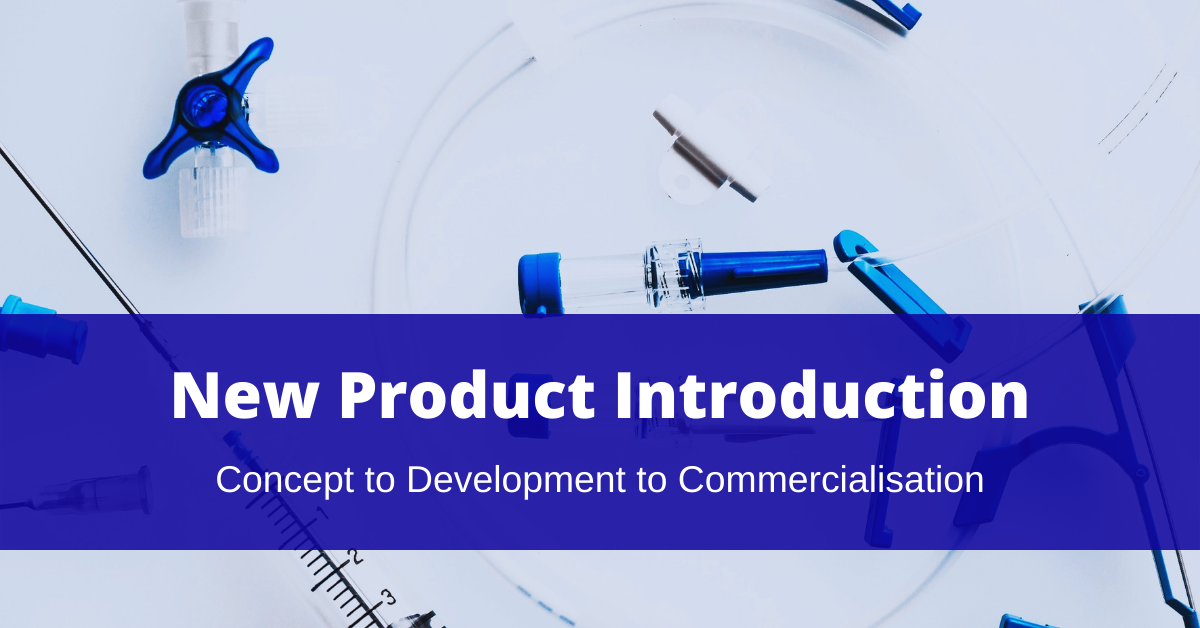The process for bringing your idea for a new medical device from the concept stage through to commercialisation is known as a New Product Introduction, or NPI. The exact steps required will depend on the device you plan to develop. As each marketplace has varying regulatory requirements, where you plan to launch will also influence the NPI process.
That said, a good place to start to get an overview of a typical NPI process is guidance provided by the Food and Drug Administration (FDA) in the US on how to bring a novel medical device to market. This guidance describes four main steps.
Details of the four steps are outlined below, although it is important to point out that these are regulatory steps in the NPI process. Other essential elements required to bring a new medical device to market include, but are by no means limited to, designing the product and producing prototypes. You will probably also have to go through Design for Manufacture and Design Transfer processes to move your product into the mass production stage.
For this blog, though, we will focus on the FDA’s NPI process for new medical devices.
Step 1: Device Classification
Correctly categorising your new medical device is the first step, as this will dictate a lot of what happens next. The classification of medical devices in the US is based on risk, and there are three main classes:
- Class I – low risk
- Class II – moderate risk
- Class III – high risk
Step 2: Premarket Submission
Step 2 involves determining whether you need to make a premarket submission to the FDA and, if so, the submission type you should use. Many Class I and Class II medical devices will require a 510(k), although some types of devices are exempt.
For Class III medical devices, a Premarket Approval (PMA) is the submission type to use. As this submission type applies to medical devices deemed to be in the highest risk category, it is the most stringent.
Once you have decided on the correct submission type, the next stage is to prepare all the information you will need.
Step 3: Liaise with FDA
Once you send in your premarket submission, the FDA review process begins. To ensure the review runs as efficiently as possible, it is important to respond promptly and comprehensively to any communication from the FDA review team.
Communications with the FDA can be formal, such as where the FDA sends you an official request for information. This type of communication can be through various methods, including phone and email, but it is usually accompanied by a letter.
Other types of communication can be part of the FDA’s Interactive Review process. This is a less formal process designed to improve efficiency, but it still helps if you respond quickly and engage thoroughly.
Step 4: Compliance
The final step in the NPI regulatory process is to ensure you comply with various regulatory controls. This includes registering the establishments involved in the production and distribution of your new medical device, as well as registering the device itself.
You also need to ensure your medical device is manufactured according to Good Manufacturing Practices, is not changed in any way, and the labelling is correct.
Expert Regulatory Support
As you can see, the regulatory steps you must go through to commercialise a new medical device product are detailed and complex. It is essential you have the right support, including in relation to preparing the documentation required for your premarket submission. It also helps to have experience handling FDA queries and requests.
At Arrotek, we can provide the regulatory support that you need in addition to our design capabilities and manufacturing services. Get in touch with a member of our team today by emailing [email protected].





